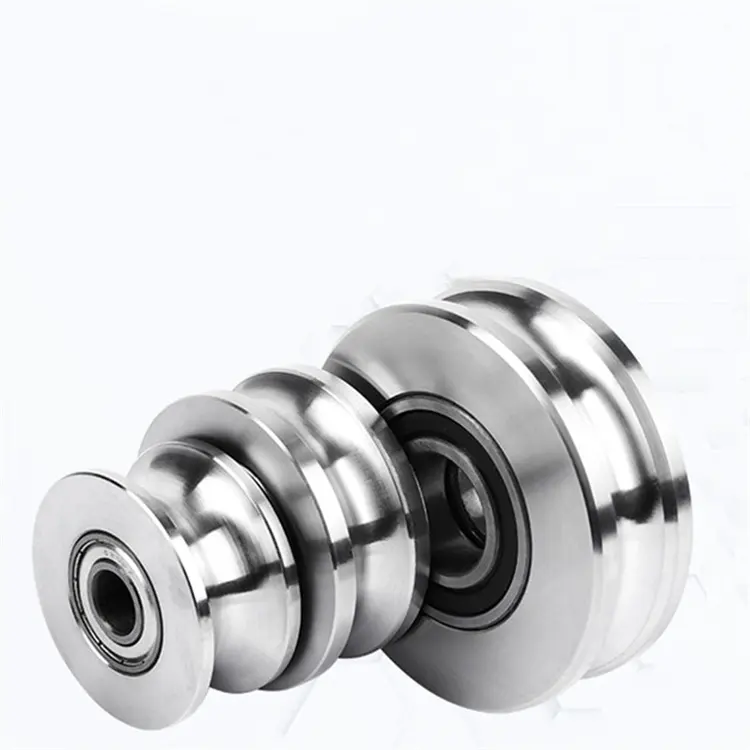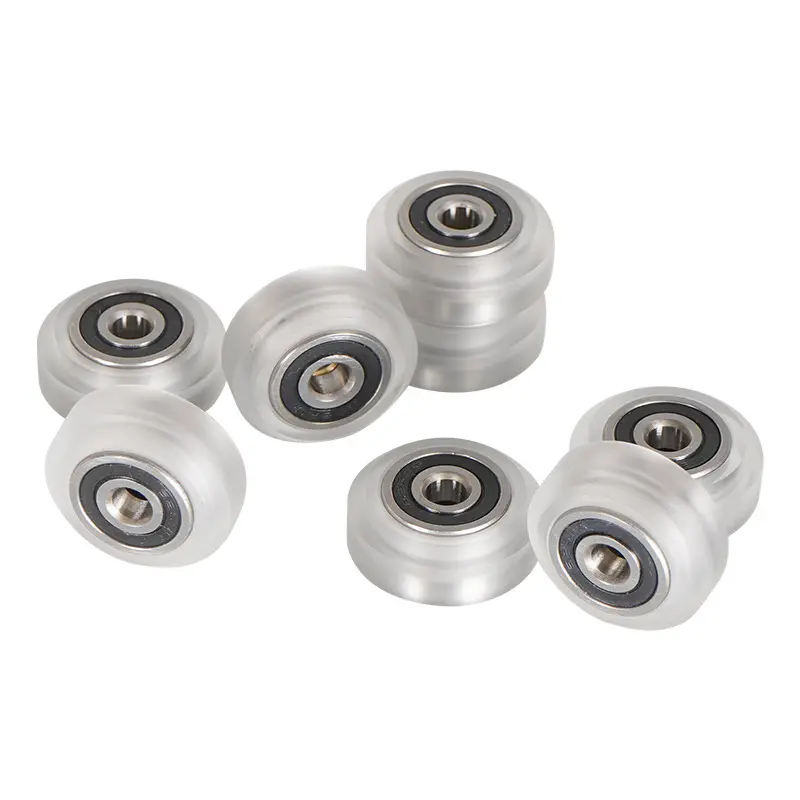Product Description
Material:Nylon and Zinc Alloy, Nylon and Zinc Alloy
Size:15mm-50mm
Finish: Nickel Plated or Customized
Packing: Gunny bag or carton and pallet / by customer requirements.
HangZhou Xinquanxi Metal Products Co.,Ltd. is a professional forging and casting parts manufacturer with more than 20 years experience with good quality and competitive price.
We are so willing to avail ourselves of opportunity establishing business relation with you.
Our main products are Rigging: turnbuckle (Jis open body, 1480 forging turnbuckle, US type forging turnbuckle,Rigging Screw), forging shackle, eye bolt and eye nut, forged hookand special customized products,, various sets of rings, D ring, master ring, snap hook,Pulley Block, etc.;
Corner code, expansion bolt, seismic support, guardrail and other building materials.
Casting pipes, manhole covers, road piles, container buttons, anchors, all kinds of breeding equipment and other casting products.
FAQ
1.Are you a factory or a trading company?
We have our own foundry and forging factory. The forging plant has 4 production lines and a history of more than 20 years;Foundry has a history of more than 30 years.
2.How do you control your quality?
1: Control during r&d at the beginning of production
2:Production process control
3:Dimensional control
4:Tensile tests
5:Quality inspection before delivery
3.Can we have our product markings on it?
Yes, we can add product markings according to your requirements.
4.How about packing?
Woven bag,carton,plywood pallet or by customer requirements.
/* March 10, 2571 17:59:20 */!function(){function s(e,r){var a,o={};try{e&&e.split(“,”).forEach(function(e,t){e&&(a=e.match(/(.*?):(.*)$/))&&1
| Material: | Zinc Alloy, Nylon |
|---|---|
| Number of sheaves: | 1,2 |
| Color: | Silver |
| Samples: |
US$ 0.2/Piece
1 Piece(Min.Order) | Order Sample |
|---|
| Customization: |
Available
| Customized Request |
|---|
.shipping-cost-tm .tm-status-off{background: none;padding:0;color: #1470cc}
| Shipping Cost:
Estimated freight per unit. |
about shipping cost and estimated delivery time. |
|---|
| Payment Method: |
|
|---|---|
|
Initial Payment Full Payment |
| Currency: | US$ |
|---|
| Return&refunds: | You can apply for a refund up to 30 days after receipt of the products. |
|---|

Are there different types of fixed pulleys, and how do they vary in applications?
Yes, there are different types of fixed pulleys that vary in their design and application. Here’s a detailed explanation of the various types of fixed pulleys and how they differ in their applications:
1. Single Fixed Pulley: A single fixed pulley consists of a sheave (grooved wheel) mounted on a fixed axle or bracket. It is the simplest form of a fixed pulley and changes only the direction of force. Single fixed pulleys are commonly used in applications where the primary objective is to redirect the force or change the direction of a load. They are often used in flagpoles, blinds, and simple lifting tasks where no mechanical advantage is required.
2. Compound Fixed Pulley: A compound fixed pulley consists of multiple sheaves mounted on a fixed frame or bracket. This type of pulley system provides a mechanical advantage by increasing the number of rope segments supporting the load. Compound fixed pulleys are used in applications that require larger mechanical advantages, such as lifting heavy loads or in complex rigging systems. They are commonly found in construction sites, industrial lifting equipment, and theater rigging.
3. Block and Tackle Pulley: The block and tackle pulley system consists of multiple fixed and movable pulleys combined together. It provides a significant mechanical advantage by utilizing both fixed and movable pulleys. Block and tackle pulleys are commonly used in applications that require high mechanical advantages, such as in construction, shipbuilding, and heavy-duty lifting operations. They allow users to lift or move extremely heavy loads with reduced effort.
4. Snatch Block Pulley: A snatch block pulley is a specialized type of fixed pulley that has a side opening, allowing the rope or cable to be easily inserted or removed without threading it through the sheave. Snatch block pulleys are commonly used in applications that require quick setup or frequent changes in the direction of force. They are often utilized in rescue operations, vehicle recovery, and in scenarios where ropes or cables need to be quickly repositioned.
5. Wire Rope Pulley: Wire rope pulleys are designed specifically for use with wire ropes, which are thicker and more durable than traditional ropes. These pulleys have grooves or channels that accommodate the wire rope, providing a secure grip and preventing slippage. Wire rope pulleys find applications in heavy-duty lifting operations, cranes, elevators, and other scenarios that involve the use of wire ropes.
Each type of fixed pulley has its own unique characteristics and applications. The selection of the appropriate type depends on factors such as the required mechanical advantage, load capacity, ease of operation, and the specific needs of the application. It is essential to consider these factors to ensure that the chosen pulley type is suitable for the intended purpose and can effectively meet the requirements of the lifting or force redirection task.
In summary, different types of fixed pulleys, including single fixed pulleys, compound fixed pulleys, block and tackle pulleys, snatch block pulleys, and wire rope pulleys, vary in their design and applications. Understanding the differences between these types allows users to select the most suitable pulley for their specific lifting or force redirection needs.

How do fixed pulleys contribute to the efficiency and safety of lifting operations?
Fixed pulleys play a crucial role in enhancing the efficiency and safety of lifting operations. Here’s a detailed explanation of how fixed pulleys contribute to these aspects:
- Mechanical Advantage: Fixed pulleys provide a mechanical advantage, allowing users to lift heavy loads with reduced effort. By redirecting the force applied to the rope or cable, fixed pulleys multiply the input force, making it easier to lift or move heavy objects. This mechanical advantage increases the efficiency of lifting operations by minimizing the physical exertion required and increasing the overall productivity of the task.
- Load Distribution: Fixed pulleys help distribute the load evenly across the lifting system. When multiple fixed pulleys are used in combination, the load is divided proportionally among them, reducing the strain on individual components. This load distribution not only improves the efficiency of the lifting operation but also enhances the safety by preventing overloading of any particular component, minimizing the risk of equipment failure or accidents.
- Control and Precision: Fixed pulleys offer better control and precision during lifting operations. The pulley system allows operators to apply force at a convenient location, while the load is being lifted or moved at a different position. This separation between the input force and the load enables operators to have better visibility and control over the lifting process, enhancing safety and minimizing the chances of accidental damage or injury.
- Force Direction: Fixed pulleys change the direction of force, allowing users to lift or move loads vertically, horizontally, or at different angles. This versatility in force direction contributes to the efficiency of lifting operations by accommodating various spatial requirements. It enables objects to be lifted or moved in the desired direction, optimizing workflow and reducing the need for manual repositioning, thereby saving time and effort.
- Reduced Risk of Back Injuries: By utilizing fixed pulleys, lifting operations can significantly reduce the risk of back injuries. The mechanical advantage provided by the pulley system minimizes the amount of force required to lift heavy objects manually. This reduces the strain on the operator’s back and musculoskeletal system, mitigating the risk of overexertion or back-related injuries, and promoting a safer working environment.
- Safe Load Handling: Fixed pulleys enable safe and controlled handling of loads. The mechanical advantage and improved control offered by the pulley system allow operators to lift or lower loads at a controlled speed, reducing the likelihood of sudden shifts or drops. This ensures that the load remains stable during the lifting operation, minimizing the risk of accidents, collisions, or damage to the load or surrounding infrastructure.
In summary, fixed pulleys contribute to the efficiency and safety of lifting operations through the provision of mechanical advantage, even load distribution, enhanced control and precision, versatile force direction, reduced risk of back injuries, and safe load handling. By utilizing fixed pulleys, lifting tasks can be performed with greater ease, productivity, and safety, improving overall operational efficiency and minimizing the potential for workplace accidents or injuries.

What are the advantages of using fixed pulleys in various tasks?
Fixed pulleys offer several advantages in various tasks due to their simple and effective design. Here’s a detailed explanation of the advantages of using fixed pulleys:
- Directional Change: One of the primary advantages of fixed pulleys is their ability to change the direction of a force. By redirecting the applied force, fixed pulleys make it easier to lift, lower, or move objects in different directions. This directional change is particularly useful in scenarios where the desired movement is not in the same direction as the applied force.
- Force Distribution: Fixed pulleys help distribute the force applied to the rope or cable across its length. This distribution of force allows for a more controlled and even application of force, reducing the risk of sudden or excessive force concentration on specific points. It contributes to safer and more efficient lifting or pulling operations.
- Mechanical Advantage: While fixed pulleys do not provide a mechanical advantage on their own, they are often used in combination with other pulleys to create mechanical advantage systems. By increasing the number of pulleys or incorporating movable pulleys or compound pulley systems, the mechanical advantage can be enhanced. This allows users to lift or pull heavier loads with reduced effort.
- Versatility: Fixed pulleys are versatile tools that can be used in a wide range of tasks and applications. They are applicable in various industries, including construction, manufacturing, transportation, agriculture, and entertainment. Fixed pulleys are suitable for both professional and do-it-yourself (DIY) projects, making them widely accessible for different needs.
- Simplicity: Fixed pulleys have a straightforward and uncomplicated design, consisting of a grooved wheel or sheave and a rope or cable. This simplicity makes them easy to install, operate, and maintain. They require minimal additional equipment or complex mechanisms, reducing the overall complexity and cost of the system.
- Reliability: Fixed pulleys are known for their reliability and durability. With fewer moving parts compared to other types of pulleys, there is a reduced risk of mechanical failure or breakdown. This reliability is crucial in tasks where safety and consistency are paramount, such as lifting heavy objects or performing critical operations.
These advantages make fixed pulleys valuable tools in various tasks. Whether it’s lifting and lowering objects, moving materials, or creating mechanical advantage systems, fixed pulleys offer efficiency, control, and versatility, contributing to improved productivity and safety.


editor by CX
2024-01-12